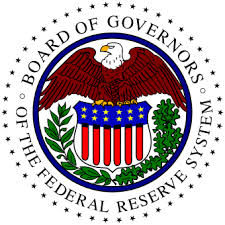Week in Review
Traders adopted a profit-taking posture towards the end of last week amid growing concerns about the impacts that higher US borrowing costs would have on the global economic recovery if the Fed starts hiking its benchmark interest rates soon. Analysts summarized this situation by advising that the markets are now at a critical stage as the US Central Bank is on the verge of implementing major changes.
The recent release of a spate of stronger-than-expected US economic indicators has clearly demonstrated a substantial economic recovery following a lackluster first quarter. In fact, further data published last Friday added additional credence to this viewpoint by revealing that Retail Sales surged higher by a robust 0.6% during August. Economists subsequently concluded after studying the details of this key release that it certainly bolstered speculation of an early end to the easy money policies launched initially by the Fed to counter the adverse impacts of the financial crisis of 2007/8.
The world’s stock exchanges were also weighed down by geopolitical tensions last week. For example, Scotland hit the headlines amid escalating concerns that it could split away from the rest of the United Kingdom if separatists win a major vote on this issue later this week. Economists are already voicing fears about how exactly Great Britain would fare in the aftermath of such a dramatic outcome.
Nevertheless, the main issues over the coming weeks will still be what moves the Fed will next make. Will this institution commence reducing its monetary easing policies while other major global central banks are boosted their programs? For example, the European Central Bank has only just stunned the markets by cutting its interest rates to historically low levels. In addition, both Japan and China are poised to activate more stimulus measures to bolster their faltering economies.
What to Expect This Week
The following major economic data will be posted around the world over the coming days.
The week will commence with the Eurozone presenting its Trade Balance for July which is expected to increase as a consequence of rising German exports. On Tuesday, the Reserve Bank of Australia will publish the minutes from its last policy meeting. Analysts are forecasting that this document will endorse a strong intent to keep interest rates stable for the foreseeable future. The United Kingdom will then disclose major inflation data for August with the Consumer Price Index dropping most likely from its previous 1.6% to 1.5%. Germany will next announce a key investor sentiment index which should slip lower in response to a faltering national economic recovery.
The Bank of England will deliver the minutes from its last meeting on Wednesday. Investors will be keen to discover if any further committee members voted for a rate hike. The UK will also issue a labor report for August/September. Sturdy results should confirm that jobless claims have decreased by about 30k and that the unemployment rate has declined from 6.4% to 6.3%. In addition, UK employers are expected to have created nearly 120k new jobs from May to July. Later in the session, the USA will declare its Consumer Price Index for August which should generate little reaction if it continues to hover about the Fed’s targeted 2%. The pivotal event of the week could then occur when the Fed announces its Interest Rate decision and future guidance policies. Vital insights could reveal when the US Central Bank will start hiking interest rates. Afterwards, New Zealand will proclaim its Gross Domestic Product for the second quarter of 2014. Experts are favoring an increase in economic growth of 0.6%. Japan will complete the day by unveiling its Trade Balance for August. A poor showing could enhance prospects of further stimulus by the Bank of Japan within the near future.
Scotland will decide its fate on Thursday by holding a Referendum of Independence. The verdict is far too close to predict with certainty but a separatism win could create market chaos. The next 2-day meeting of the G20 Finance Ministers will commence in Australia. The main topic should be discussions concerning further sanctions against Russia. The Swiss National Bank will subsequently declare its Monetary Policy Decision by reducing its deposit rate beneath zero to counter deflation. The European Central Bank will then announce the outcome of the first auction of TLTRO funds. A weak performance will bolster prospects for further monetary easing. The USA will next post its Housing Starts and Building Permits for August. Both are expected to top 1.04 million.
Canada will close the week by issuing its Consumer Price Index for August which should come in about the 2.0% mark.





